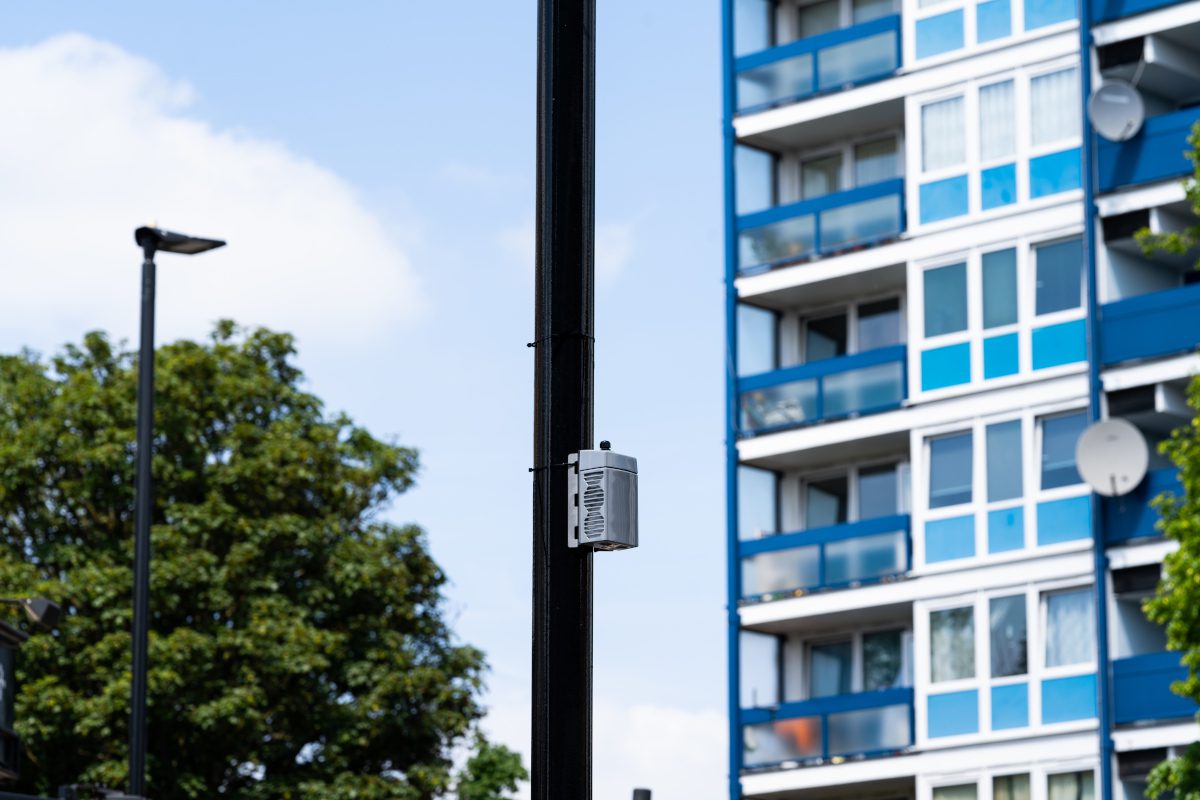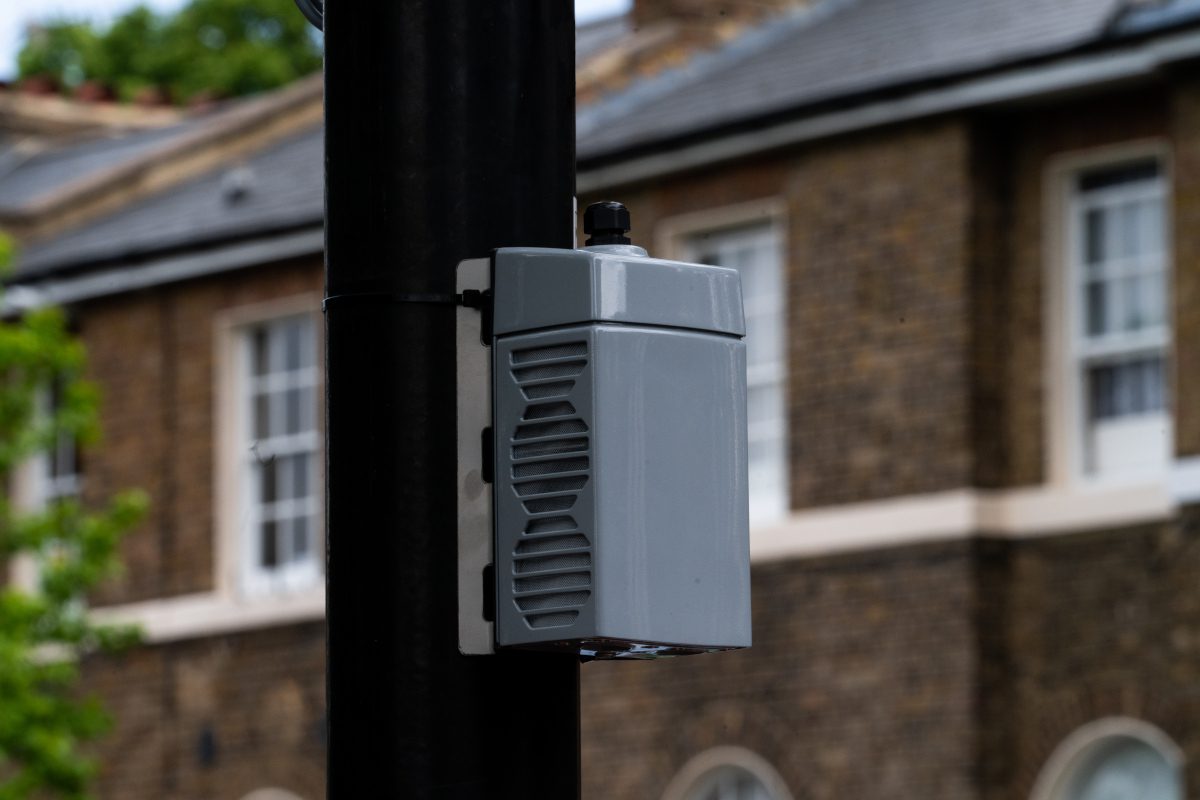
Fixed sensor network will seemingly provide at least 100x more data points and refresh 60x more regularly than existing air quality reference stations, to show a street by street picture of air quality in the area in real time
An air quality sensor network described as “the world’s densest” will be installed in Camden, London, this summer. The firm behind it hopes “to fundamentally transform how we monitor and manage air pollution to improve public health and well-being in urban spaces.”
Air quality specialist AirLabs will install 250 advanced AirNode air quality sensors across the Borough, in partnership with Camden Council and The Camden Clean Air Initiative, an air pollution action group in the Borough.
The network will seemingly provide at least 100x more spatial resolution and refresh 60x more regularly than the network of existing air quality reference stations in Camden, capturing and reporting hyper-local air quality data every minute to map the issue in real time. The firm says the data will contribute to impactful decision making for all stakeholders interested in improving air quality in the Borough, from councils, individuals and communities to schools, offices, hospitals, retail and hospitality businesses.
The sensors will be deployed over the coming months and will complement the existing air quality monitoring network. Once launched, the data generated from the network can be used in a myriad of ways, says AirLabs, enabling the public to map less polluted routes from A-to-B, feeding into local traffic management policy and providing NHS Trusts and schools with information to help raise awareness of air pollution and protect vulnerable communities. The future possibilities of how the data can be used “are vast” and AirLabs says it is aiming to engage with potential partners, clean air groups and councils to explore future collaboration.
Marc Ottolini, CEO of AirLabs, said: “Our ultra-dense network of sensors will provide unprecedented ultra-high definition visibility of local air pollution to allow communities, businesses and stakeholders to make more informed choices to protect the health and well-being of the local population.
“There’s no time to wait in tackling the air pollution crisis – we all contribute to air pollution, and we all suffer the health impacts that it causes. This new information system empowers us all to enact data-driven change and become part of the solution.
He said the network “will serve as a blueprint for boroughs across London and cities around the world, using the power of data to inform meaningful action and protect populations from the invisible threat of air pollution.”

Early adopter
The council is said to have been early in its adoption of World Health Organization air quality standards, and its aspiration to be a leader sets the scene for the partnership, says AirLabs.
Camden Councillor Adam Harrison said the project “will form an important part of our work to protect public health by building a more detailed understanding of the sources of air pollution throughout Camden and the actions we can all take to reduce pollution and our exposure to it.”
The network of AirNode sensor devices has been strategically designed to cover the entire borough of Camden, says AirLabs, including areas underrepresented by the existing monitoring network and those most vulnerable to air pollution – schools, transport hubs, healthcare facilities and busy intersections. Each device will measure a wide range of air pollutants including airborne particulate matter and toxic gases (nitrogen dioxide (NO2), carbon dioxide (CO2) and ozone (O3)), as well as temperature and humidity, giving the full picture of air quality in an area.
Devices will be optimally spaced to identify and differentiate between different sources of pollution, including whether they are localised sources such as road traffic and wood-burning, or regional sources such as industry. The devices will be installed on lampposts, buildings and other suitable infrastructure and take measurements every minute enabling detection of the smallest of changes.
Air quality is a localised issue, with pollution levels differing significantly from street to street. Even the most advanced air quality networks currently lack a street level understanding of air quality and gaps in the data mean that communities are missing the complete picture when it comes to the quality of air outside their homes, schools and offices.
The announcement of the network follows a recent coroner’s ruling which called on Government and local authorities to increase air quality monitoring and to do more to raise public awareness of the health risks from air pollution exposure. The government has pledged to significantly increase the air quality monitoring network in the UK and this project will act as a blueprint to demonstrate the benefits of a dense monitoring network.
Prashant Kumar, Chair & Professor of Air Quality and Health, University of Surrey, said: “Research has shown that air pollution is hyper-local as well as regional. We need many air quality monitoring devices in a dense network to describe it accurately, diagnose the problem and identify sources and solutions.
In London alone, air pollution accounts for approximately 4,100 premature deaths every year, worsening the impacts of lung and heart conditions as well as other respiratory illnesses. Killing more people annually than road traffic accidents, poor air quality costs society, businesses and our NHS services more than £15 billion a year. Air quality also has a proven impact on educational attainment and overall physical and mental well-being.






